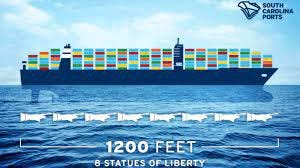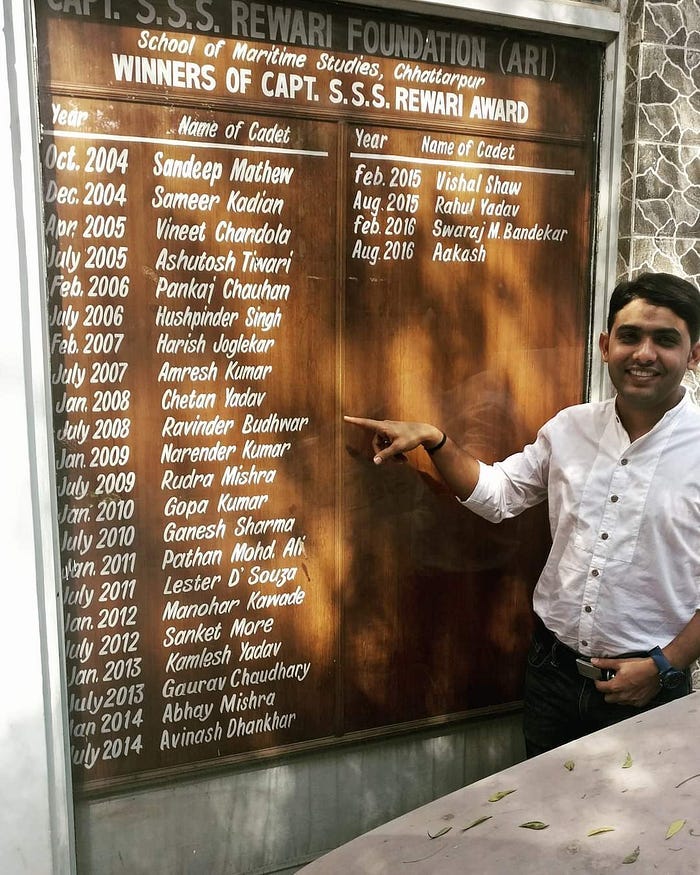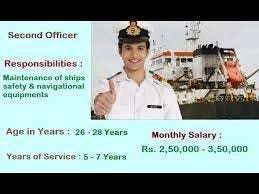How to build safe and efficient systems. The Merchant Navy’s Top 6 Lessons for Tech Leadership [Storytime Saturdays]
The scale at which they operate can teach you a lot about running operations at scale.
Hey, it’s your favorite cult leader here 🐱👤
On Saturdays, I will cover stories/writeups covering various people’s experiences 📚📚. These stories will help you learn from the mistakes and successes of others. These stories will cover various topics like Leadership, Productivity, and Personal/Professional Development. Use these to zoom ahead on your goals 🚀🚀
To get access to all my articles and support my crippling chocolate milk addiction, consider subscribing if you haven’t already!
p.s. you can learn more about the paid plan here.
As a land dweller, it can be easy to forget about shipping. Most of us don’t realize it, but this is a crucial industry. The global merchant fleet in 2020 shipped 2 Billion Deadweight Tons. Without shipping, modern supply chains would not exist. The components of the device you’re using to read this article were all shipped across oceans to be assembled together.

Recently, I had the opportunity to talk to Capt. Ravi Budhwar, a captain works in the Merchant Navy. Captain Budhwar has spent many years on the seas and is an expert in all the intricacies of Maritime Trade and shipping. And he had some very interesting insights to share about shipping and its unique operations.
A middle-sized ship can weigh over 90,000 tons and is on the water constantly for months on end.
The crew on board has to encounter challenges such as rough weather, constantly changing seascape, 24-hour navigation, and changing time zones. If the ship has problems mid-voyage, repairs can be challenging. Most impressive is how they can manage all this with small crews (the average size of the crew on these ships is between 20 and 30).

The conversation about the scale of his operations and the efficiency of his crew had me very interested in the systems that made this possible. I wanted to know how the ships and the industry had created systems to solve such complex problems. In this article, I will be covering some of the key ways that the merchant navy is able to run its operations across multiple nations, cultures and time zones while running trillion-dollar operations.
Key Merchant Navy Principles you should adopt
Clearly Defined Responsibility and Priorities- One of the first things that you will notice with the merchant navy is that every crew member has very clear roles and priorities. This allows the organization to run very smoothly as there is very little wasted time in figuring out what’s next.
Documentation- I beat this dead horse every chance I get. But hey, there’s a reason that it shows up in so many of my investigations into high-performing teams. We have a full guide on how to create documentation here.
Planned Maintenance Systems- Why wait for things to go wrong when you can proactively look into systems and make sure everything is working well?
The leader should be multi-faceted- To be the Captain of a ship, you need to be well-versed in all the dimensions of its operations. Even though the Captain will likely not go down to the boiler room to fix a screw, understanding the various angles allow them to make the best decisions on the fly. Similarly, if you seek to lead teams (or hire leaders), you’d do well to expand your horizons beyond your core competence. This will allow you to take a multi-faceted approach to help you look at the big picture and make the best judgment calls.
Make sure you get your notebook out because this one is going to give you something to think about.
Clearly Defined Responsibility + Priorities
One of the most striking features of a ship is that every member of the crew knows exactly what they have to do. Each crew member is allocated a specific shift, and their duties are written down in painstaking detail. This extends even to emergency responsibilities. The high level of detail has many benefits. The most obvious is in cases of emergencies, where instead of wasting time, the crew can spring into action immediately.
Even on the most mundane days, this plays a crucial role. Since everyone knows exactly what they need to do at different times, there is very little time wasted in idling. The tasks are done like clockwork, in a timely and effective manner. This also leads to increased accountability. If a task isn’t done, the crew knows exactly who was responsible and this makes diagnosing the problem much faster.
This is something that a lot of organizations could use. In my experience, the management often has half-baked ideas for projects. A lot of time is wasted in retrieving datasets (no one knows which ones will be relevant), ironing out the details with stakeholders, and redoing entire segments because requirements suddenly change. I once spent a whole week waiting to learn what I had to do. A more clearly defined and rigorous division of labor with clearly defined roles and responsibilities would serve companies/organizations well. This will also allow you to promote autonomy in your teams which has a whole bunch of benefits-
Documentation
Leading off the last point, I noticed that the Merchant Navy is …a little extreme about documenting things. Every day, all the happenings and weather conditions are recorded in a logbook. Aside from this, the crew compiles all the work done in the day and sends a presentation to the captain. There are separate weekly and monthly reports aside from this.

This is still somewhat sane. The navy, however, is slightly neurotic about the documentation. Every door is labeled. You can tell what room you’ll enter, before even entering it. The elevators have a directory of all the floors, so you can figure out which floor you need to go to. There are huge files to keep note of every little decision made on the ship.
Fortunately, we don’t have to be this militant to avail of the benefits. Sensible documentation covering the projects, the data sources used, features selected and dropped, protocols used, etc are enough. Unfortunately, most firms (including big names) need to invest a lot more in the documentation aspect. Otherwise, there is a lot of time wasted redoing procedures and tests already completed by the previous team. This is time spent reinventing the wheel. Some upfront investment in documentation will save tons more resources in the future. Already did a more detailed piece about documentation here, so I’m going to proceed with the other points.
Planned Maintenance System
Looking at the scale of the ships, I was curious about one thing: “How do you stop things from breaking?” This is especially important for ships. Remember each of these ships is at sea, where repairs in case of problems are not easy. The size of these giants also means that dragging them from deep waters would be a challenge (cargo ships easily dwarf Aircraft Carriers). And there’s the cost. A delay by a day can cause a loss of Millions of Dollars.
There is a safety issue as well. Failure of ships in the deep sea can cause serious danger to the safety of the crew. Based on the cargo, it will also adversely impact the marine biology of the surrounding area. Thus there is no margin for error.
So how does the crew of 20 maintain a ship of thousands of tons, intricately designed with thousands of pipes, drains, and other moving parts? Especially when some of these parts are bigger than the crew themselves (the engine in these ships is bigger than most houses). As a tech person, I was expecting tons of high-tech monitoring systems and AI monitoring. The solution was much simpler.
While the team does have tons of monitoring equipment, the secret lies in the proactive approach taken by the crew. Instead of waiting for signs that something is wrong, the team instead does regular checks of the parts, regardless of functioning. These checks, called Planned Maintenance Systems are planned well in advance. The precise division of labor allows the crew to work fast and check equipment much bigger than they are. PMS allows for long-distance shipping to be safe and cost-effective.
To quote a cliche, prevention is better than cure. This holds true for Software and Tech as well. It’s cheaper to invest a few resources into proactively monitoring systems, as opposed to waiting for something to go wrong (For my AI people, that is why integrating multiple error metrics, and monitoring for data drift is crucial in your own projects). Integrate this mentality into your projects as well. One such example is Chaos Engineering, which is a favorite of Netflix. I did a guide on it here.
A captain can do everything (doctor, navigation, etc etc)
This was probably the most surprising aspect. Captain Ravi told me that the ship captains also double up as Medical Professionals, Navigators, and whatever else is needed. They have the authority to sign off on birth, death, and marriage certifications. They also have to deal with customs and port authorities. They have ultimate authority (and responsibility) over the ship. If one of the crew members has any kind of problem (including technical issues), the captain steps in for them.
To do their job well, Captains must be able to do everything well. This makes captains like Capt. Ravi real-life ninjas, master of multiple skills. It allows Captains to not only step in when needed but also truly understand the challenges faced by their crew. A well-rounded skill set also allows captains to truly anticipate problems and be proactive in creating solutions.

This approach works very well in tech. There is often a huge disconnect between management and developers, which leads to unreasonable expectations and very unclear instructions. There are only losers in such an arrangement. A project leader with technical skills in a large scope of projects will be much better at leading. This doesn’t even require expertise in the domains, just a solid understanding.
This applies to you on a personal level as well. The more you know about different ideas, the better you will be at solving problems. And the various different ways you will be to apply your abilities to create value for yourself and other people. Subscribers of this cult have been able to combine the ideas shared in the various days to zoom through the career ladder and boost their earnings. My own 100 USD/hour contract was based on this principle.
A good model to build and evaluate your skills is the reverse pyramid model of knowledge, used by Sajid, a Senior AWS Architect and mentor to thousands of engineers. You can find more in my conversation with him here.
The article is already running long, so I will stop here. Of course, this article doesn’t even scratch the surface of the various complexities of the shipping business and all there is to learn there. To learn more about that, feel free to reach out Capt. Ravi Budhwar. He is an experienced Mariner who has mentored many sailors, both personally and professionally. He is also involved with, The Plenum School, an educational institution revolutionizing education. He is always happy to talk to interested parties. If you have any questions/thoughts about his experiences or the merchant navy, he’d be happy to speak more.
Loved the post? Hate it? Want to talk to me about your crypto portfolio? Get my predictions on the UCL or MMA PPVs? Want an in-depth analysis of the best chocolate milk brands? Reach out to me by replying to this email, in the comments, or using the links below.
Stay Woke. I’ll see you living the dream.
Go kill all,
Devansh <3
Reach out to me on:
Instagram: https://www.instagram.com/iseethings404/
Message me on Twitter: https://twitter.com/Machine01776819
My LinkedIn: https://www.linkedin.com/in/devansh-devansh-516004168/
My content:
Read my articles: https://rb.gy/zn1aiu
My YouTube: https://rb.gy/88iwdd
Get a free stock on Robinhood. No risk to you, so not using the link is losing free money: https://join.robinhood.com/fnud75





